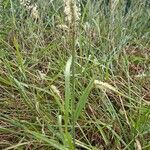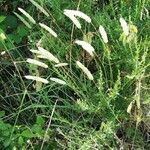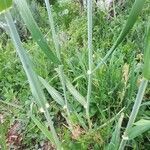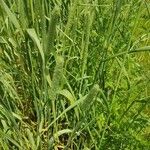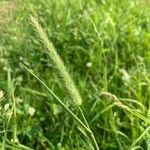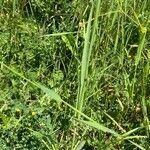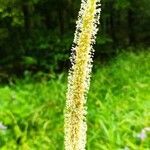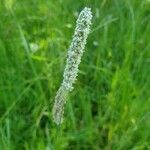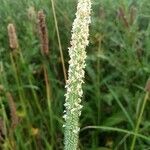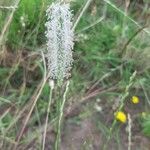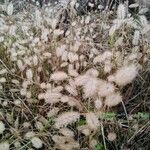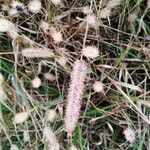Perennial forming loose or dense tussocks. Culms erect or geniculately ascending, 40–120 cm tall, 5–6-noded, lowest nodes usually swollen and cormlike. Leaf sheaths glabrous, loose; leaf blades 10–50 cm, 3–8 mm wide, glabrous, both surfaces and margins scabrid, apex acuminate; ligule 2–5 mm, rounded. Panicle narrowly cylindrical, 4–15 × 0.5–1 cm, gray-green; branches adnate to central axis. Spikelets obovate-oblong, 3–3.5 mm; rachilla extension absent; glumes oblong, membranous, scaberulous, lower softly hairy on margins, keel conspicuously pectinate-ciliate, apex truncate with stout, 0.5–1.5 mm, scabrid awn; lemma ca. 2 mm, 7-veined, puberulent, especially along veins, apex obtuse; anthers 1.5–2 mm. Caryopsis ca. 1 mm. Fl. and fr. Jun–Aug. 2n = 28, 42.
Tufted, usually 5–10 dm, the culms somewhat bulbous-thickened at base, minutely scabrous at the summit; upper sheaths terete, not dilated; blades ordinarily 5–8 mm wide, rough-margined; infl cylindric, (3–)5–10(–15) cm × 5–8 mm; glumes 2–3.2 mm, abruptly rounded-truncate to an awn 0.7–1.5 mm, hispidulous-ciliate on the keel, with thin, pale or green margins; 2n=14, 21, 28–84. Native of Europe, cult. for hay and pasture, escaped and naturalized throughout most of the U.S. and s. Can.
